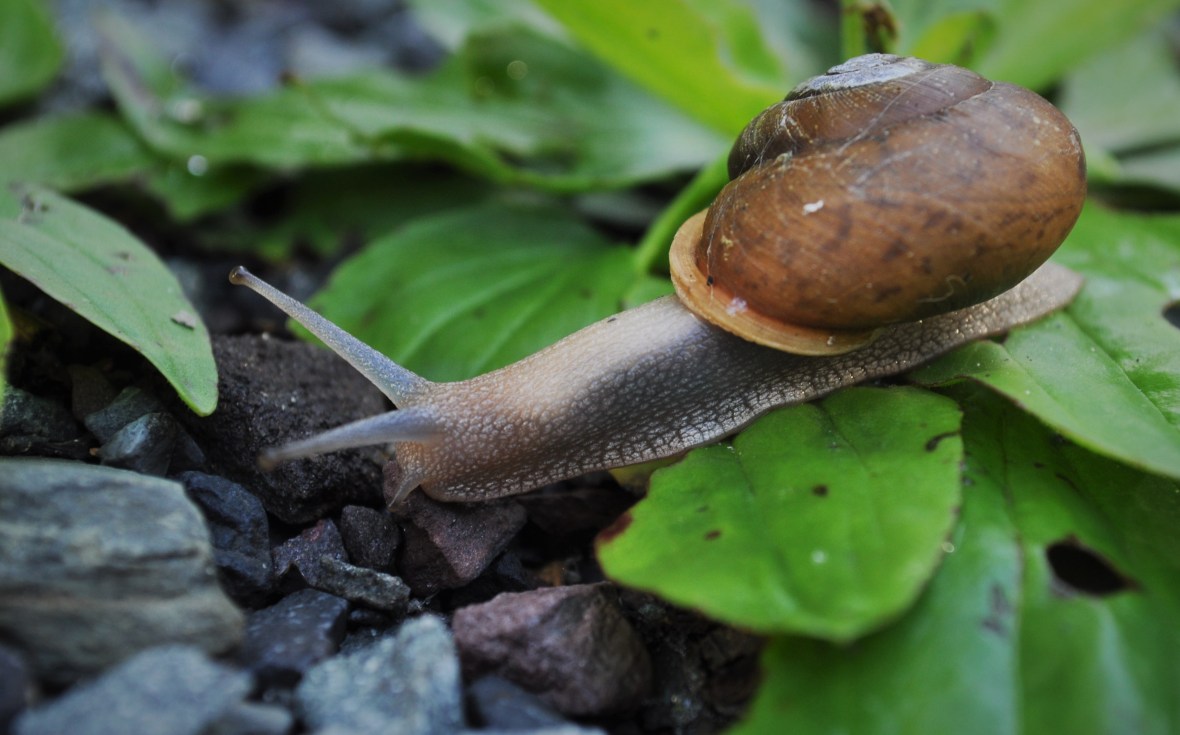
The Art of Ecology
Building visual connections between people and nature.
Malacology – A funny word for a funny group of animals.
While we may first think of these tiny creatures as garden pests, snails are very important members of the ecosystem and should be valued!

Malacology, or the study of snails, has shown us how snails play a role in efficient decomposition and providing vital nutrients for animals that eat them.
Snails eat leaves – yes, they do like leaves in your garden – but their favorite food is rotting vegetation and fungi. Sometimes they will also ingest soil in order to eat some of the microorganisms that live in it! By eating these rotting substances, they are participating in nutrient cycling! If those dying leaves, rotting trees, or other decomposing organic matter were to sit around on the forest (or garden!) floor without being further broken down by living decomposers like snails and the fungi they love, we would be BEYOND buried in rotten matter! Gross.
As the snails consume soil and decomposing matter rich in nutrients, they themselves become nutrient rich! Their shells require a lot of calcium in order to stay strong and durable. Did you know that a snail with a good, rich diet, will be able to mend their shells if broken? For example, if a bird picks one up to eat and drops it accidentally, the snail may wind up with a cracked shell, either from the bird’s strong beak or from being dropped. The snail will secrete a strong sticky mucus that covers the crack in the shell and then hardens. This mucus is similar to the slime that they secrete as they crawl around, but this stuff is slightly different and can mend the shell. Snails have even been known to mend a stepped on shell!

The snails will munch away and acquire calcium mainly found in the soil as bedrock breaks down and in leaf litter from tree species that act as calcium pumps – trees that soak up calcium in the soil more efficiently. Aspens, Sugar Maples, and some Dogwoods are examples of these types of trees. You may notice more snails in areas that have calcium rich stone beneath the soil and those types of trees. As the snails make their shells stronger through their calcium intake, they are also making themselves more appetizing to predators!
Many animals such as insect larvae, salamanders, turtles, mice, squirrels, fox, and birds are known to eat snails. Not only can they gain excellent and valuable protein from the fleshy part, but they are also obtaining calcium that helps them create a stronger skeletal system! Imagine instead of having children drink more milk to make their bones grow strong, we had them all eating snail shells…. Hmm…
One of my favorite books, “The Sound of a Wild Snail Eating,” by Elizabeth Bailey, goes into great detail about snail anatomy, morphology, ecological value, and even familial relationships of snails! If you’re still on the fence of “Do I like snails or….meh?”, I highly recommend this easy and page-turning read.

So yes, maybe you do find them as a pest in your garden, but please don’t try to kill them! This removes another decomposer from your landscape and removes one more food source for animals that you may love! Instead, try adding diatomaceous earth or crushed egg shell to your soil. Soft snail bodies can’t crawl over the sharp edges and will be deterred. Instead of dying, they just go elsewhere – still maintaining their value! Another way to reduce your snail population while maintaining their ecological value is to set up nesting boxes, feeders, and habitat for animals that predate upon snails. By creating a well-rounded wildlife habitat, you are encouraging nature to keep itself in balance! Another method is by planting mint. Snails don’t really like the smell and if you plant mint sporadically throughout your garden, not only will you be able to harvest this yummy herb, but you’ll be deterring the snails!
Have you now decided that you love snails? I do! Bring them into your home without the mess of slime trails by adding some snail art to your walls. Click here for some snail awesome-ness!

Supporting The Art of Ecology through the online shop or by becoming a Patron at any tier on Patreon can help keep educational content coming!
